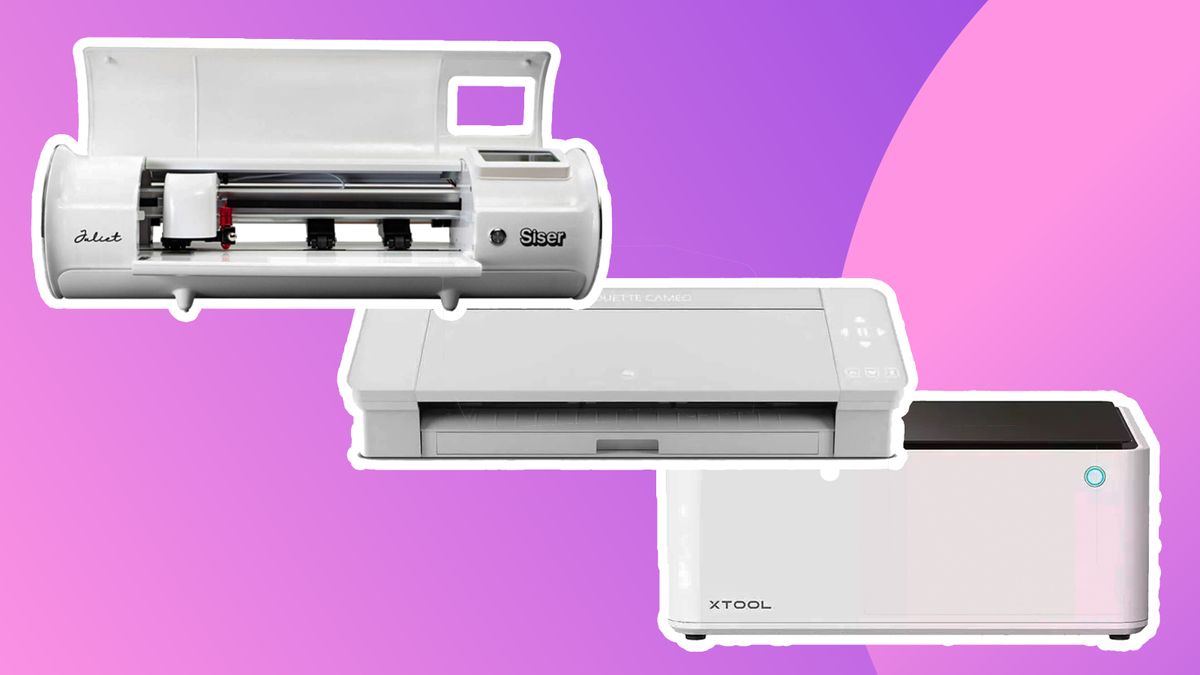The best Cricut alternatives or Cricut dupes now include more options than ever. There are cutting machines from Brother and Silhouette of America that are comparable to Cricut’s, while newer brands like xTools and Glowforge have brought laser cutters to the table as an alternative option to the best Cricut machines for cutting paper, card, vinyl, fabric and more.
We’ve tested and reviewed a wide range of craft machines, including all of the main offerings from Cricut itself, so we know what we’re comparing Cricut alternative against. For every machine, there’s a good alternative, and often a cheaper alternative to Cricut. In this article, I look at the best Cricut alternatives for different uses and consider how they compare based on our own tests and a comparison of real customer reviews.
The Silhouette brand is one of Cricut’s biggest rivals, and we have a dedicated guide to the best Silhouette machines. We’ve also compared Cricut versus Silhouette to see how they match up head-to-head. You might also want to see our pick of the best vinyl cutter machines and the best laminators. And if you do decide to go with Cricut make sure you see our guide to Cricut Prime Day deals.
The best Cricut alternatives: quick list
We’ll start with a quick overview of the best Cricut alternatives. Scroll down for our full guide.
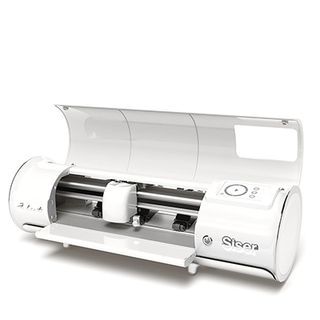 Best overall
Best overall
The Siser Juliet is a classy machine. We found it to be fast and quiet, and we love the LCD touchscreen and the camera for auto tracking. It’s not a cheap Cricut alternative, though.
Read more below
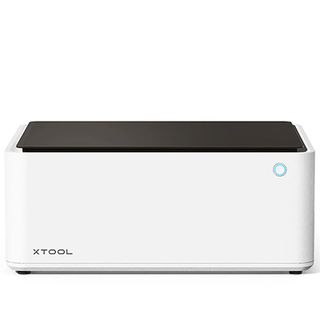 Dual-purpose
Dual-purpose
The xTool M1 uses both a blade and laser for cutting and engraving, meaning you can do everything for a project in one go. We found it to be versatile and easy to use.
Read more below
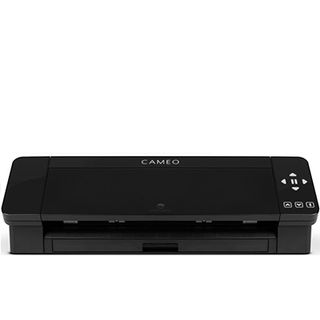 Best budget
Best budget
The Silhouette Cameo 4 is comparable to Cricut Maker 3 in many ways. It’s fast and reliable, though it has fewer accessories and options.
Read more below
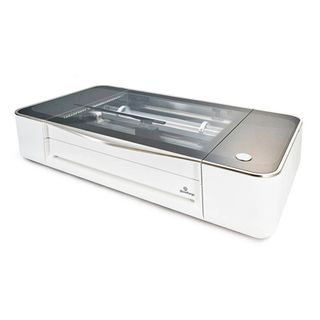 Best laser
Best laser
The Glowforge Pro looks like a high-end printer, and it can cut, engrave and score over 100 materials. You can use everything from wood and plastic to metal and fabrics, and even marble,
Read more below
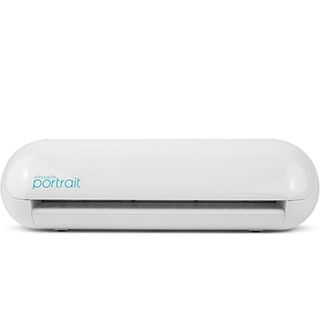 Best portable
Best portable
We found this entry level cutting machine to be handy for card and sticker projects, and it can handle some smart materials although it lacks the power of bigger devices.
Read more below
 Best large
Best large
This large, specialist machines provides a 24-inch cutting width and supports up to three metres in length. There’s not much this digital cutter can’t handle.
Read more below
The best Cricut alternatives in full
Why you can trust Creative Bloq
Our expert reviewers spend hours testing and comparing products and services so you can choose the best for you. Find out more about how we test.
The best Cricut alternative overall
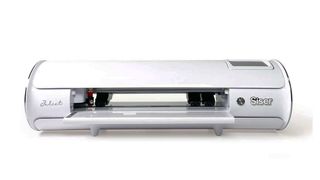
01. Siser Juliet Digital Cutting Machine
Our expert review:
Specifications
Reasons to buy
Reasons to avoid
We think the Siser Juliet Digital Cutting Machine is easily the best alternative to Cricut Maker 3 if you’re looking for a straight-forward blade cutter with some neat design choices. We liked the LCD display for controlling settings, and the built-in camera helps for precision. There are also adjustable pinch rollers, which means it’s possible to adjust the speed and pressure of the cut and experiment more.
The Siser Juliet looks quite stylish too. It’s a cylindrical build that feels more compact than Cricut Maker 3. It’s also whisper quiet (78dB) compared to the latest Cricut machines and features a Marker adapter to turn it into a drawing plotter – that built-in camera really aids precision here. We also found the Leonardo design software to be easy to use, and it comes with many pre-installed designs, making it ideal for a newcomer to digital crafting. Overall, the Siser Juliet is an excellent craft machine comparable to Cricut, although it isn’t a cheaper alternative to Cricut, and may actually cost more than the Maker 3 depending on the deals available.
The best dual-purpose Cricut alternative
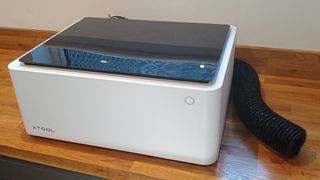
Specifications
Reasons to buy
Reasons to avoid
The xTool M1 breaks the mould for digital craft machines in that it’s both a blade cutter and a laser cutter in one machine. The same housing holds both, so you can blade cut and laser engrave in one go, or blade cut and then laser cut smaller details even a blade won’t manage.
This neat box of tricks won a Red Dot Design Award in 2022 and it’s easy to see why. We found it to be a smart craft machine like no other on the market right now. The compact machine has few buttons and everything is controlled via xTools app for Android and Apple. This is very similar to Cricut Design Space, and supports vector art software such as CorelDRAW.
The slight downside to the xTool M1 is the laser is a 10 watt diode laser compared to the 45 watt CO2 laser of the Glowforge Pro (see below). In my xTool M1 review I found this to be slower than Glowforge Pro but with good results for thinner materials and all engraving. The brand does have a more powerful machine, the Laserbox, and you can read about that in our guide to the best xTools machines.
At a fraction of the cost of a Glowforge but more expensive than a Cricut Maker 3, the xTool M1 is a nice mid-way craft machine that can deliver for a greater variety of projects than Cricut. It’s an excellent hybrid option and easily one of the best Cricut alternatives for those who need more versatility in terms of materials.
The best budget Cricut alternative
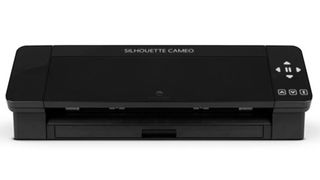
03. Silhouette Cameo 4
Our expert review:
Specifications
Reasons to buy
Reasons to avoid
We think this is the best cheaper alternative to Cricut Maker. There are plenty of similarities between to two machines. In terms of speed, they’re very close, with both being very fast. And like the Maker 3, the Cameo 4 has an integrated roller feeder. And despite Silhouette Cameo 4 prices being lower, it’s actually the stronger of the two machines in terms of downward force, boasting 5kg, a full 1kg more than the Cricut Maker.
The roller can handle longer designs too, and the cutter has new tools like the Kraft and Rotary and can handle balsa wood, leather and even chipboard. It can cut material up to 3mm (0.11in) thick using the knife blade, which beats the Maker 3 by 0.6mm. However, another big difference is the software. We’ve always found Cricut’s to be very intuitive and easy to use if perhaps a little simplistic, but Silhouette Studio has a steeper learning curve.
That said, we like the fact that Silhouette opted for standalone software that runs on a computer. This means there’s no monthly subscription fee like there is with Cricut Access, and there’s no need to be online. Note: there are three models of the Cameo 4, which includes this base model and the Cameo 4 Plus and the Cameo 4 Pro (see below), each goes up in size. Read our guide to the best Silhouette machines for more details.
A large laser Cricut alternative
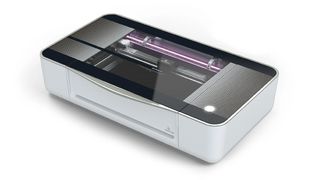
Specifications
Reasons to buy
Reasons to avoid
The Glowforge Pro is a uniquely powerful Cricut alternative that brings Cricut’s approachability to the laser cutter sector. It looks like a high-end printer, and is often dubbed a laser printer, but it can cut, engrave and score over 100 materials, from wood and plastic to metal and fabrics, and even marble.
The laser is more powerful than that of the xTool M1 at number 1 on our list, and we found that the simple, elegant design sets it aside from other laser cutters. Like Cricut, it’s simple to use. You just drag and drop your design files into the Glowforge app, align the material in the machine, and press ‘Print’. The Glowforge app also contains thousands of pre-made designs. Some of these can be used commercially and adjusted to make them unique.
Glowforge Pro is expensive, and it’s more powerful than many people will need (there’s also a Glowforge Plus and Glowforge Basic – see our guide to the best Glowforge machines), but it can make everything from board games and toys to jewellery and even furniture.
Best portable Cricut alternative

05. Silhouette Portrait 3
Our expert review:
Specifications
Reasons to buy
Reasons to avoid
While the Silhouette Cameo 4 is a great alternative to Cricut Maker 3, the Silhouette Portrait 3 is comparable to Cricut Explore 3. This machine is designed as an entry level cutting machine, and in this respect it’s ideal though don’t expect the kind of cutting force and flexibility you’d get from the larger Silhouette cutting.
It might not be as portable as the Cricut Joy, but it’s smaller than the Silhouette Cameo 4 and the Maker, It also has lower cutting power (210 grams to Silhouette Cameo 4’s 5000 grams), but we found it to work well for card and sticker projects. It can handle some other materials (vinyl, heat transfer (iron-on), paper, cardstock, sticker paper, and some fabric), but if you’re a serious sewer or quilter we’d recommend the Silhouette Cameo 4 or one of the Brother machines.
We found most Silhouette tools and blades work with the Silhouette Portrait 3, but some do need an adapter (sold separately). It’s also compatible with the Silhouette Go App for mobiles. All in all, we think the Silhouette Portrait 3 is a good value place to start for anyone who’s new to digital cutters.
Best Cricut alternative for US sewers
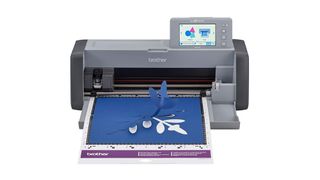
06. Brother ScanNCut SDX125
Our expert review:
Specifications
Reasons to buy
Reasons to avoid
Brother will be a more familiar brand name for many. It’s known for its printers and sewing machines, but it also makes Cricut-like machines for cutting. We found its ScanNCut SDX125 to be a great alternative to Cricut for hobbyists working with paper, card vinyl and fabric, and particularly for quilters.
What makes the ScanNCut SDX125 different from other alternatives is the scanning part. It features a built-in scanner so you can transfer printed pages into real projects. You can send SVG files from your computer, but you can also programme design directly on the machine using the LCD touchscreen display and its 682 built-in designs, including 100 quilting patterns and nine fonts.
Like the Silhouette Cameo 4, it can handle material up to 3 mm) thick, beating the Cricut Maker 3. It has an AutoBlade that automatically detects the material thickness. However, in terms of width, The SDX125E is limited to 29.7cm (11.7in) compared to the Cricut Maker’s 33cm (13in). The other downside is that it’s actually more expensive than the Cricut Explore Air 2. Note that the Brother ScanNCut SDX125E is sold in the US, see below if you’re in Europe.
Best Cricut alternative for UK sewers
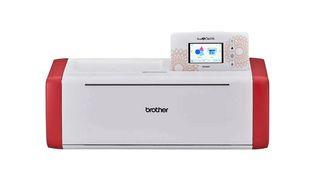
07. Brother ScanNCut SDX900
Our expert review:
Specifications
Reasons to buy
Reasons to avoid
If you’re in Europe, you might be scratching your head wondering why you can’t find the Brother ScanNCut SDX125E anywhere. Well in the UK and elsewhere in Europe, Brother has the SDX900, which is a very similar machine in terms of size and functions. Like the ScanNCut SDX125, it’s a great alternative to Cricut for hobbyists working with a wide range of materials.
Again, it has a built-in scanner, LCD touchscreen and 682 built-in designs, and it beats the Cricut Maker 3, handling material up to 3 mm thick. However, it is expensive. If you’re looking for a cheaper alternative, you may prefer the Cricut Explore Air 2 unless you really need to cut thicker material.
Best budget Cricut alternative for large projects
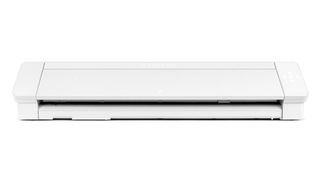
08. Silhouette Cameo 4 Pro
Our expert review:
Specifications
Reasons to buy
Reasons to avoid
The Silhouette Cameo 4 Pro is the largest model in the Cameo 4 range. With a 24-inch cutting width and supporting three-metre lengths there’s not much this digital cutter can’t handle. I’ve put it a little further down my list because the Pro is so large and specialist. For everyday crafters, the Cameo 4 (above) is more suitable.
However, if you do need a craft cutting machine that can handle large materials, particularly fabrics and heavy paper, I think the Cameo 4 Pro is ideal. Other than the size this model is similar to the smaller Cameo 4 editions; meaning it can trim and cut vinyl, heat transfer material, cardstock, photo paper and fabrics.
Best budget Cricut alternative for scrapbooking
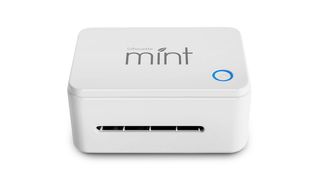
09. Silhouette Mint
Our expert review:
Specifications
Reasons to buy
Reasons to avoid
The Silhouette Mint is designed to digitise the art of ink and paint stamping, and we found that it does that exceptionally well. The machine is neatly specced but small enough to hold in the hand or take to a friend’s house in a bag.
The advantage of creating ink stamps digitally to print patterns on bags, shirts and cards, is that it creates consistency. You feed sheets into the Silhouette Mint, and its thermal tech heats the design and creates raised 3D patterns. These can then be coloured using Silhouette’s thermal inks and stamped onto clothes for custom designs. It comes with over 50 free templates (naturally, you can also design your own).
The Silhouette Mint isn’t a cutting machine – it’s more akin to a heat press machine, around the size of a Cricut EasyPress Mini, but it has the advantage you don’t need a cutter, such as the Silhouette Portrait 3, to create the designs. I found it to be easy and practical to use.
Best heat press Cricut alternative
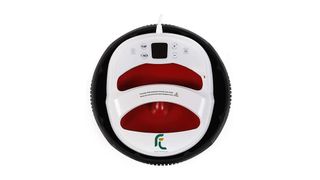
10. Fierton Heat Press Machine
Our expert review:
Specifications
Reasons to buy
Reasons to avoid
That brings us to the best Cricut Easy Press alternative for those who are printing rather than cutting, particularly on T-shirts, sweatshirts or other fairly large textile items. The Cricut EasyPress 2 is a handy, portable device that works a treat, but it’s relatively expensive and the there are cheaper options out there than can do the job.
I found The Fierton heat press is light, portable and it’s suitable for vinyl and textiles like sweatshirts, banners, and T-shirts using thermal transfer and sublimation paper. It’s very easy to use. You simply set your preferred time and temperature, then watch it do its thing in under sixty seconds. There’s a safety mode and an insulated safety base, and I was able to work for a couple of hours without it getting too hot. There’s also an automatic turn-off time to help if you forget. The iron sits a little way from the surface and takes a little longer to heat up than some options, but once it’s ready it does the job very well.
How to choose the best Cricut alternative
When choosing an alternative to Cricut, you need to consider how you want to use it and match your needs to the machine. Take into account the size of the machine, the number of accessories and how it’s used. Cricut uses its own app and many alternatives, such as Silhouette, have similar software. However, some newer machines, such as Siser and Brother, have onboard CPUs and LCD touchscreens, which can make them easier for beginners.
Also take into account how the machines work. For example, the Silhouette Cameo 4 craft machine is, on paper, less powerful than a Cricut Maker 3, but it cuts in a different way, making multiple fast cuts rather than one deep cut. Ultimately, the best Cricut alternative for you will depend on what you want it for, be it papercraft, sewing, engraving or more?
How we tested the best Cricut alternatives
When we test craft machines we not only examine what a product can do, but also the value it represents. Our writers are crafters, some professional, and so they know what’s needed from a craft machine for different uses, be it for hobbyists or professionals.
Our reviewers aim to test each machine on the basis of how it’s intended to be used. We will use them on a real project or multiple projects, from start to finish. We compare power, functions and features, accessories, build and value. Where we’ve not been able to test a machine ourselves, we refer to reviews on our sister sites such as T3 and TechRadar, as well as compiled reviews and views from reliable crafters.
Read more about how we test and review craft machines.
Best Cricut alternatives: frequent questions
Which craft machine is comparable to a Cricut Maker 3?
There are two digital craft machines that stand out as being as good as a Cricut Maker 3, and these are the new Siser Juliet and the Silhouette Cameo 4. Both can cut and handle many materials, including heat press vinyl.
Is Cricut or Silhouette better?
Cricut Maker 3 will cost more if you want to make the most of it, factoring in various accessories that you might want, but generally Cricut machines are more user-friendly and a lot easier for beginners to get started with.
Is Brother ScanNCut as good as Cricut?
I really like the Brother ScanNCut machines, as they can do almost everything the Maker 3 can do but also feature an onboard CPU and LCD touchscreen, meaning you don’t need a laptop or other software to get up and running. Brother also sell a ScanNCut machine that comes with everything, from blades to materials, to get going out of the box.
Should I buy a cheaper Cricut alternative?
There are more affordable craft machines that Cricut, but often these are smaller, less powerful or manual craft cutters. Generally the best Cricut alternatives, including those from Silhouette, Siser and Brother are costly but they will last and can grow with your skills.
